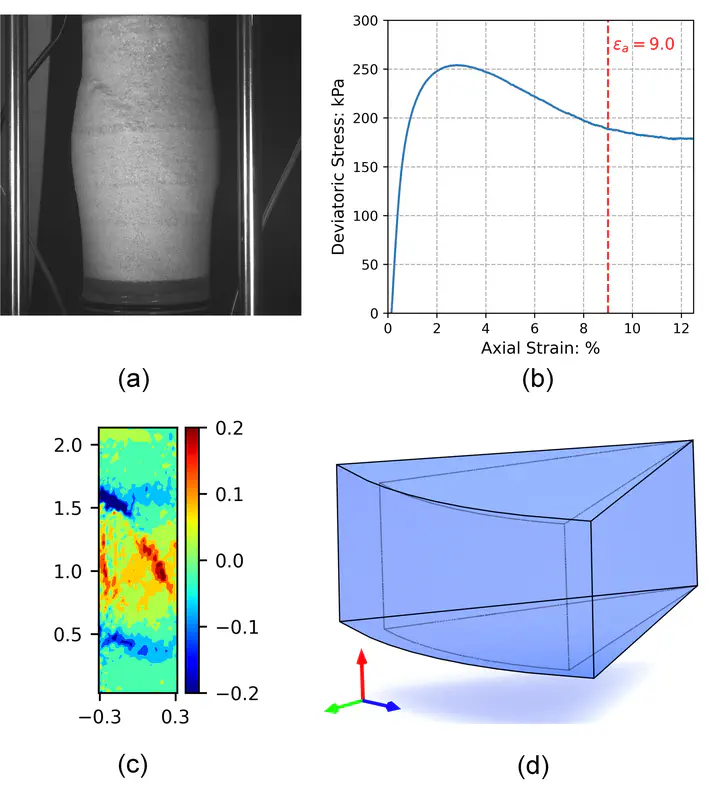Statistical Characterization of Boundary Kinematics Observed on a Series of Triaxial Sand Specimens

Abstract
This paper follows up on a reference paper that inspired MDPI’s topic “Stochastic Geomechanics From Experimentation to Forward Modeling”, in which the authors populated a spatio–temporal database of boundary displacement fields from a series of triaxial sand specimens using three-dimensional (3D) digital image correlation analysis. The database was curated and is currently available to the scientific community for further study. This paper uses a subset of this database, in which the experimental conditions were similar, to statistically investigate the dominant kinematic phenomena observed on the boundary of triaxial sand specimens under compression. The first-order 3D kinematic operators under the cylindrical coordinates, comprised of the divergence, curl, and gradient, were applied to the boundary displacement fields to illustrate the localization deformation patterns including the translational, rotational, shearing, and volumetric behaviors throughout the triaxial compression processes. Subsequently, the first-order statistics of the kinematic results are estimated, with the aim of revealing the evolution of associated localization effects as well as their corresponding uncertainties in space and time. The results of this research provide an innovative statistical interpretation of the localization effects on soil specimens under three-dimensional stress conditions. The proposed approach advances the interpretation of granular material’s responses under triaxial compression experimental conditions, while opening an opportunity to reproduce the material’s kinematic responses under the triaxial experimental conditions through constitutive modeling or machine learning techniques.